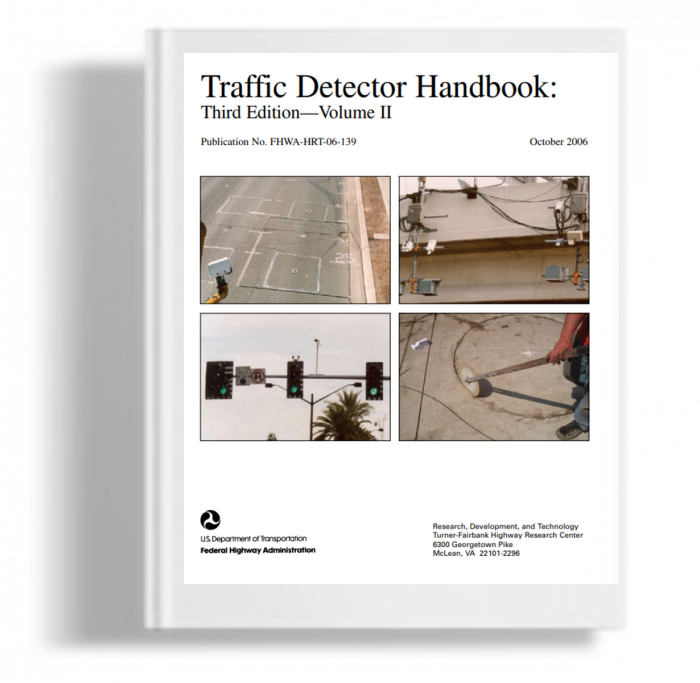Kami menggunakan cookies untuk membuat pengalaman Anda lebih baik. Untuk mematuhi petunjuk e-Pribadi yang baru, kami perlu meminta persetujuan Anda untuk menyetel cookies. Pelajari lebih lanjut .
Traffic Detector Handbook : Third Edition - Volume II
The objective of this Handbook is to provide a comprehensive resource for selecting, designing, installing, and maintaining traffic sensors for signalized intersections and freeways. It is intended for use by traffic engineers and technicians having responsibility for traffic sensors, whether in-roadway or over-roadway sensors.
- Baca | Unduh PDF
- Traffic Detector Handbook : Third Edition - Volume II
The objective of this Handbook is to provide a comprehensive resource for selecting, designing, installing, and maintaining traffic sensors for signalized intersections and freeways. It is intended for use by traffic engineers and technicians having responsibility for traffic sensors, whether in-roadway or over-roadway sensors. These two families of sensors have different characteristics and thus corresponding advantages and disadvantages that are discussed throughout the Handbook. Topics covered include sensor technology, applications, in-roadway sensor design, installation techniques, and maintenance. The sensor technology chapter discusses the operation and uses of inductive loop detectors, magnetic sensors and detectors, video image processors, microwave radar sensors, laser radars, passive infrared and passive acoustic array sensors, and ultrasonic sensors, plus combinations of sensor technologies. The sensor application topics addresses safety, operational performance, multimodal issues, and physical and economic factors that the practitioner should consider. Appendixes include research, background papers, and implementation guidance. The information contained in this Handbook is based on the latest research available on treatments and best practices in use by the surveyed jurisdictions. References are provided for the student, practitioner, researcher, or decisionmaker who wishes to learn more about a particular subject.

